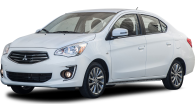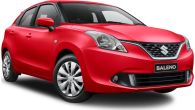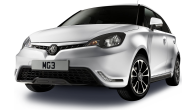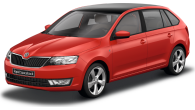The base model Hyundai i20 Active is part of a formerly rare but now growing breed of car on Australian roads - a cheap, three-door hatchback.
We don't really like our cars without rear doors in Australia, but with the availability of the India-sourced i20 to whet our bargain-hunter appetites, the question must be asked: what am I getting for my lowly dollar?
Value
The range kicks off at $15,590 for the three-door six-speed manual but it's highly unlikely you'd ever pay that much given Hyundai's fondness for driveaway deals. For your closer to $14,000 spend, you get a 1.4-litre 16-valve engine good for 73.5kW and 136Nm of torque. Neither of these figures are world --or class-- beating, but it moves its slightly chubby 1121kg kerb weight with ease.
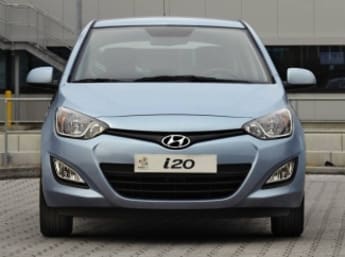
Inside is a passable stereo, mildly comfortable seats front and rear, bluetooth, dodgy USB connectivity (which doesn't work) and old-school Hyundai design and quality. The carpets don't quite fit, there's exposed metal when you flip the rear seats up to fold the backrests and not everything works the way it should.
Outside you get steel wheels and Hankook tyres but an otherwise classy look from the update of a couple of years ago.
The light hatchback segment is fiercely competitive.
A recent entry into the fray is the five-door only Thai-built Mitsubishi Mirage ES. The launch pricing of $12,990 for the base model ES is shortly to be revoked, sending the price northward to around $16,000 on the road. In every way it is a poorer car than the i20, with the exception of its 5 star ANCAP rating and operational USB port. It is noisy, uncouth and wobbles around in an alarming fashion on its skinny 14-inch wheels. It's also missing a gear and a cylinder, but is much lighter. It is absolutely no fun to drive or look at.
The Nissan Micra ST is reaching the end of its life, but still looks and feels good. Like the Mirage, it's a missing a cylinder and a gear but is otherwise a reasonable little car and has added benefit of rear doors. It's rather more expensive than either the Hyundai or the Mirage, which is curious given it is made in low-cost India, as is the i20.
The Volkswagen Up might be down on power and doesn't have an automatic option, but it's a Volkswagen. The i20's interior may be slightly more spacious, but he VW's is smarter and for $500 you can add satnav and Bluetooth. It also comes standard with city emergency braking, unique in this class. Yes, it is a fair bit more expensive to run and own, but sometimes the brand power is too much to overlook.
Design
The i20's nose got a good going over in 2011 and this yielded quite a change in character. Whereas the original 2007 model looked like it was trying to look like a Mazda and a Getz at the same time, this one has a distinctly European feel, almost Volkswagen-esque. Once you're past the B-pillar, it certainly looks like a Hyundai. The chintzy wheel covers don't help maintain the classiness, but it is quite sharp.
The three door also looks better than the five door, which has that heavy-handed crease down its flanks.
Inside there are echoes of the Getz in the dashboard architecture and the cheap stereo sticks out a bit, looking a little aftermarket. Everything fits, though, and there's a spot for your phone, wallet and a cup of coffee.
There are some jarring moments - as with the steering wheel, the gear shifter is horrible urethane. There are also obvious seams in the dashboard and the little screen up on the top of the dash is hard to read.
Safety
The i20 has a five star ANCAP safety rating by virtue of six airbags, ABS, traction and stability control. Such is the lack of power, the traction control light didn't wink once.
Technology
The 1.4 litre engine nestling in the engine bay looks pretty agricultural and is, in a sense, quite simple. It's a 16-valve twin cam (what isn't these days?). Its 73.5kW is more than competitive from its displacement although a bit more torque would always be welcome.
Power comes high in the rev range at 5500rpm but it doesn't feel peaky.
The suspension is very traditional MacPherson struts up front and torsion beam axle at the rear, which may explain the relative liveliness of the handling.
The technology in the car is quite straightforward, too. Apart from a half-decent stereo, the bluetooth works fine but the proprietary 30-pin iPhone/iPod connector was unable to coax the stereo into playing any music. Switching to bluetooth didn't help either, so we've no idea if it's any good.
Driving
The i20 is a surprising amount of fun on the road. It definitely rolls in cornering, but not too much. The tyres on the base car are pretty ordinary but the tuned-for-Australia steering is, bizarrely, the best of any Hyundai I've tried, and that's most of them.
The noisy engine comes to the party but is let down by the gearing - it's too tall and on slower ninety-degree corners, first is preferable to second. The clutch is also completely lifeless and you've no idea where the bite point is. On the upside if you just step off the clutch pedal on a downshift, you can coax the back end into a little waggle.
It's quite lively when you push it, but the tyres quickly give up - with decent rubber, the i20 would be a lot more fun than it already is.
Around town the i20 is quite relaxed as long as you're aware of the vagaries of the long ratio gearbox. It's quiet enough, too, although the tyre roar overcomes the engine noise once you're doing about 60km/h, and it can be tiring.
The most annoying thing about the car is the driver's seat - there's a sturdy bar that neatly digs into your kidneys and the supportiveness of the seat leaves much to be desired.
Verdict
The Hyundai i20 is entering its twilight years with us and serves as a constant reminder of how rapidly the Korean giant is improving.
It's cheap and cheerful, has enough power and handling to be almost fun and feels like it will hang together for some time to come. There's plenty of other cars vying for your sub-$15,000 spend, but the i20 is slightly bigger, gruntier and will be cheaper to own and run than almost any of them.
Hyundai I20 2013: Active
| Engine Type | Inline 4, 1.4L |
|---|---|
| Fuel Type | Unleaded Petrol |
| Fuel Efficiency | 6.4L/100km (combined) |
| Seating | 5 |
| Price From | $5,060 - $7,370 |
| Safety Rating |
|
Pricing Guides








.jpg)

.jpg)



















